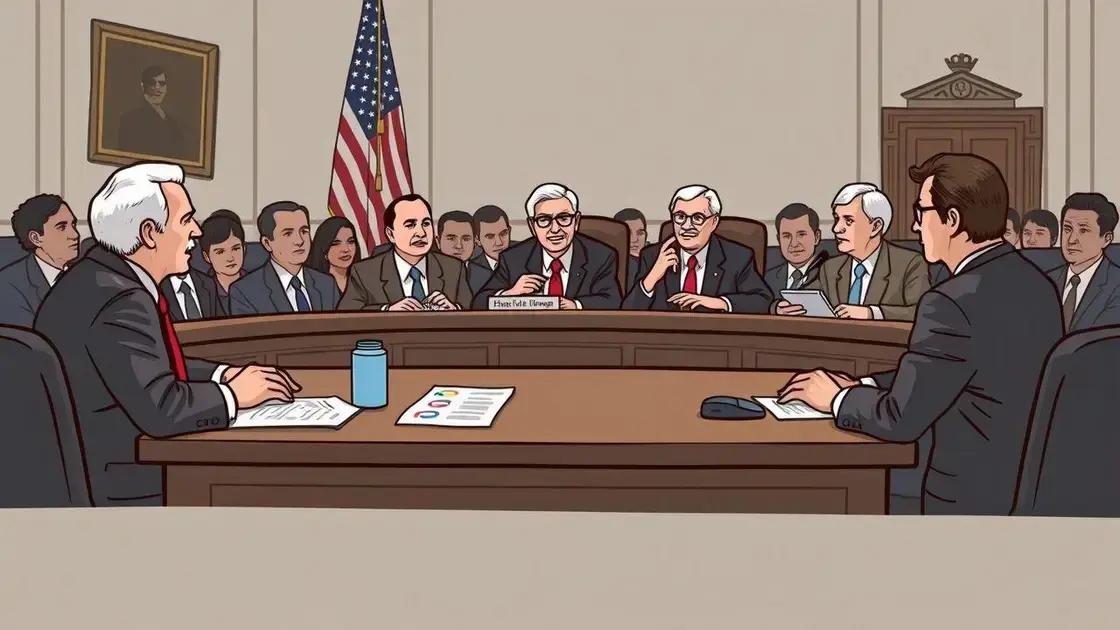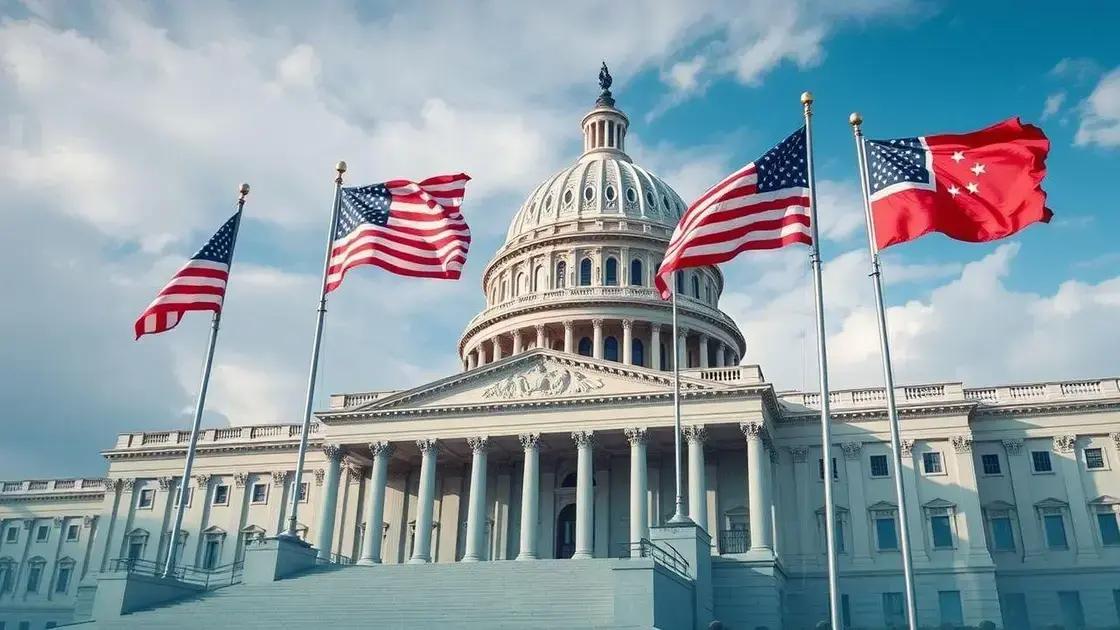Alarming reductions in federal consumer protection funding

Alarming reductions in federal consumer protection funding jeopardize consumer rights, leading to increased fraud and inadequate oversight, making advocacy for stronger protections essential for safeguarding individuals.
Alarming reductions in federal consumer protection funding raise serious concerns for all of us. Have you ever wondered how these cuts could affect your rights as a consumer? Let’s dive into the implications.
The current state of federal consumer protection funding
The current state of federal consumer protection funding is alarming. Funding for programs that protect consumers is being significantly cut, which affects the quality of oversight and enforcement.
Why does this matter? Many people rely on these protections to ensure their rights are upheld in the marketplace. Without adequate funding, consumer complaints may go unaddressed, leading to a rise in scams and fraudulent activities.
Impact of Reduced Funding
With less funding, agencies struggle to monitor businesses effectively. This can lead to:
- Increased consumer fraud
- Weaker enforcement of regulations
- Less assistance for vulnerable populations
As funding decreases, the capacity of these organizations to respond to consumer issues diminishes. This puts consumers at a greater risk of exploitation.
Historical Context
Historically, federal consumer protection funding has fluctuated. During economic downturns, cuts typically occur. These reductions can lead to hiring freezes or layoffs within important regulatory agencies.
It’s essential to examine the effects of these funding changes on consumer safety. Poor funding choices can have long-lasting repercussions on public trust and industry standards.
More attention and resources are necessary to combat these issues and ensure consumers receive the protection they deserve. Advocating for stronger funding will help maintain important consumer safeguards in our ever-evolving marketplace.
Impact of funding cuts on consumer rights
The impact of funding cuts on consumer rights is profoundly concerning. As federal consumer protection funding decreases, the rights of individuals become increasingly vulnerable. Consumers rely on these protections to ensure fairness and safety in the marketplace.
The decline in resources for consumer protection agencies directly affects their ability to enforce laws that safeguard consumer interests. This can lead to a rise in unfair practices and scams, leaving consumers exposed to significant risks. When funding is cut, fewer resources are available for investigations and enforcement actions.
Specific Consequences
The consequences of these funding cuts can be severe. Some of the most critical impacts include:
- Decreased capacity to handle consumer complaints
- Limited resources for education and outreach programs
- Weakened legal enforcement against fraudulent activities
These issues significantly harm the ability of consumers to seek redress and protect themselves in the event of disputes. With fewer protections in place, consumers may hesitate to report violations, fearing no action will be taken.
Effects on Vulnerable Populations
Vulnerable populations are disproportionately affected by cuts in funding. Groups such as the elderly, low-income families, and minorities often face greater risks in the marketplace.
Without sufficient funding, essential programs that help these communities navigate consumer issues are threatened. Education and resources that empower these groups become limited, leaving them more susceptible to exploitation.
Ultimately, the reduction in consumer protection funding undermines the progress made over the years to ensure fair treatment for all consumers. It is crucial to advocate for restoring funding to protect everyone’s rights in the marketplace.
Case studies: Consequences of reduced protection funding

Examining case studies allows us to understand the real-world consequences of reduced protection funding. Without proper funding, various consumer protection cases have shown alarming trends that jeopardize consumer rights.
In several instances, consumers have faced increased challenges due to insufficient oversight and support. For example, a recent study highlighted the rise in fraudulent schemes targeting elderly individuals. When funding cuts occurred, resources to investigate these scams diminished, leading to an increase in reported incidents.
Real-World Impacts
The effects of funding cuts can be seen in multiple areas, such as:
- Increased prevalence of unsafe products
- Limited access to consumer education programs
- Inadequate responses to consumer complaints
A clear example involves a state consumer protection agency that experienced significant budget cuts. As a result, their staff numbers dwindled, crippling their ability to respond to public inquiries and investigations. This left many consumers without guidance when facing unfair practices.
Notable Examples
Many states have seen devastating results from these funding reductions. One case involved a significant rise in identity theft when a state’s consumer protection office could not adequately monitor businesses. This disconnect allowed scammers to exploit loopholes, resulting in financial losses for countless victims.
Moreover, another incident reported an increase in deceptive advertising practices. Once a consumer protection agency could no longer maintain regular reviews, many companies took advantage, leading to misleading claims and unregulated markets.
Ultimately, these case studies highlight the importance of adequate funding in maintaining consumer protections. When resources are allocated effectively, they empower agencies to act in the best interest of consumers, ensuring fair treatment across the board.
Future outlook: What can be done to restore funding?
The future outlook for restoring funding in consumer protection is uncertain but necessary. As funding cuts have real consequences, finding solutions is crucial for ensuring consumer rights are upheld.
One significant step to restore funding is advocating for policy changes. Grassroots movements can play a vital role in raising awareness about the importance of consumer protection. These efforts can influence lawmakers to prioritize funding for consumer protection agencies.
Potential Solutions
There are several strategies that can help restore funding, including:
- Increased public awareness campaigns
- Building coalitions among consumer advocacy groups
- Lobbying for federal and state budget increases
Additionally, promoting community involvement is essential. Consumers can unite through organizations to advocate for their rights. These groups can provide resources to educate the public on issues related to consumer protections.
Engaging Stakeholders
Engaging various stakeholders is another crucial component. Businesses, non-profits, and government officials can collaborate to discuss funding challenges. When stakeholders work together, they can develop innovative solutions that benefit consumers and encourage stronger protections.
A funding recovery plan could also involve reallocating existing budgets to ensure consumer protection remains a priority. Scrutinizing government spending and identifying areas where funds can be redirected may yield positive results.
Ultimately, restoring funding for consumer protection requires collective effort and commitment. It’s essential for individuals and organizations to push for changes that will protect consumers now and in the future.
How consumers can advocate for stronger protections
Consumers play a vital role in advocating for stronger protections. By taking action, individuals can influence policies that safeguard their rights and the rights of others. It’s important to understand how to make a difference effectively.
One effective method is to join or support consumer advocacy groups. These organizations work to protect consumer rights and lobby for policy changes at local, state, and federal levels. Being part of such a group amplifies the voice of consumers, making it harder for lawmakers to ignore.
Ways to Advocate
Here are some specific actions consumers can take to advocate for stronger protections:
- Contact elected officials directly to express concerns.
- Participate in public forums and community discussions.
- Raise awareness through social media campaigns.
- Share personal experiences that highlight the need for stronger protections.
Engaging with others is key to creating a united front. When consumers share their stories, they raise awareness about issues that may not be widely known. This grassroots approach can lead to significant changes in policy.
Educating Others
Education is also a powerful tool. Consumers should educate themselves and their communities about consumer rights. This can involve workshops, informational flyers, or even social media posts. When individuals are informed, they are more likely to take action and encourage others to join the fight for stronger protections.
Additionally, advocating for transparency in business practices is crucial. Consumers should support businesses that prioritize ethical practices and hold those that do not accountable. By making informed choices, consumers can send a strong message about the importance of fair treatment.
Ultimately, consumers have the power to shape the landscape of consumer protection. With collective action, advocacy, and education, they can push for changes that benefit everyone in society.
FAQ – Frequently Asked Questions about Consumer Protection Advocacy
What can I do to support consumer protection efforts?
You can join advocacy groups, raise awareness through social media, and contact your elected officials to express your concerns.
Why is it important to educate myself about consumer rights?
Understanding your rights enables you to make informed decisions and advocate effectively for protection against unfair practices.
How can grassroots movements impact consumer protection?
Grassroots movements can mobilize public opinion and influence lawmakers to prioritize consumer protection in policy decisions.
What role do businesses play in consumer advocacy?
Businesses that emphasize ethical practices contribute to consumer advocacy by ensuring fair treatment and transparency in the marketplace.






